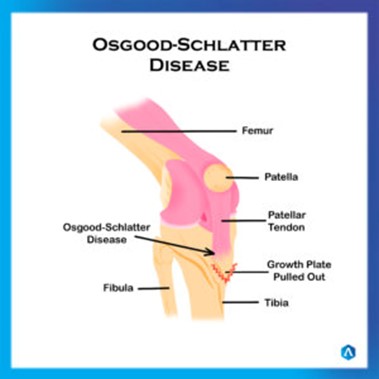
Osgood Schlatter disease is a common cause of knee pain in growing adolescents.
Symptoms
The key symptom is knee pain, caused by inflammation just below the knee. This is where the kneecap (patellar) tendon meets and attaches to the shinbone (tibia).
Assessment
There are various reasons for knee pain so seeing a professional lower limb expert is important.
Proper biomechanical assessment can quickly determine Osgood Schlatter disease and how this is affecting the patient’s gait, posture and wellbeing.

Treatments
Treatment for Osgood Schlatter Disease is non-surgical. This could be one or a combination of the following:
- Stop doing your exercise regime of strenuous activity and rest as much as possible
- Ice the area of pain as required during the day, you can use an ice pack or other method for this, as long as this is done for up to 20 minutes until the skin becomes numb
- Using the Crown medical orthotic devices which are engineered to suit biomechanical correction, can help limit aggravation and assist with healing
- Strapping techniques can help provide support while healing occurs
- Prolotherapy has had positive results helping to stimulate cartilage repair
- Anti-inflammatory medication like Voltaren or ibuprofen help reduce swelling and pain.
